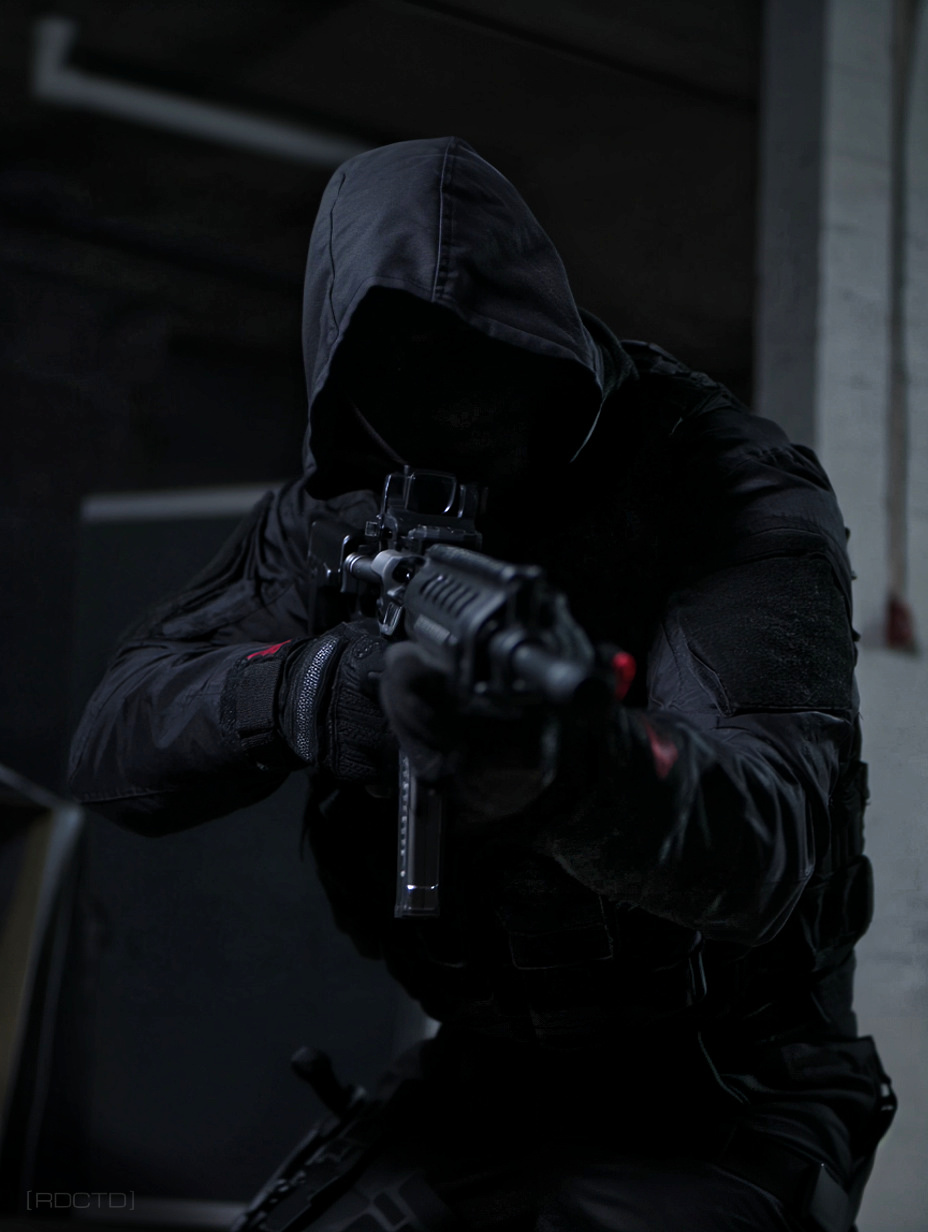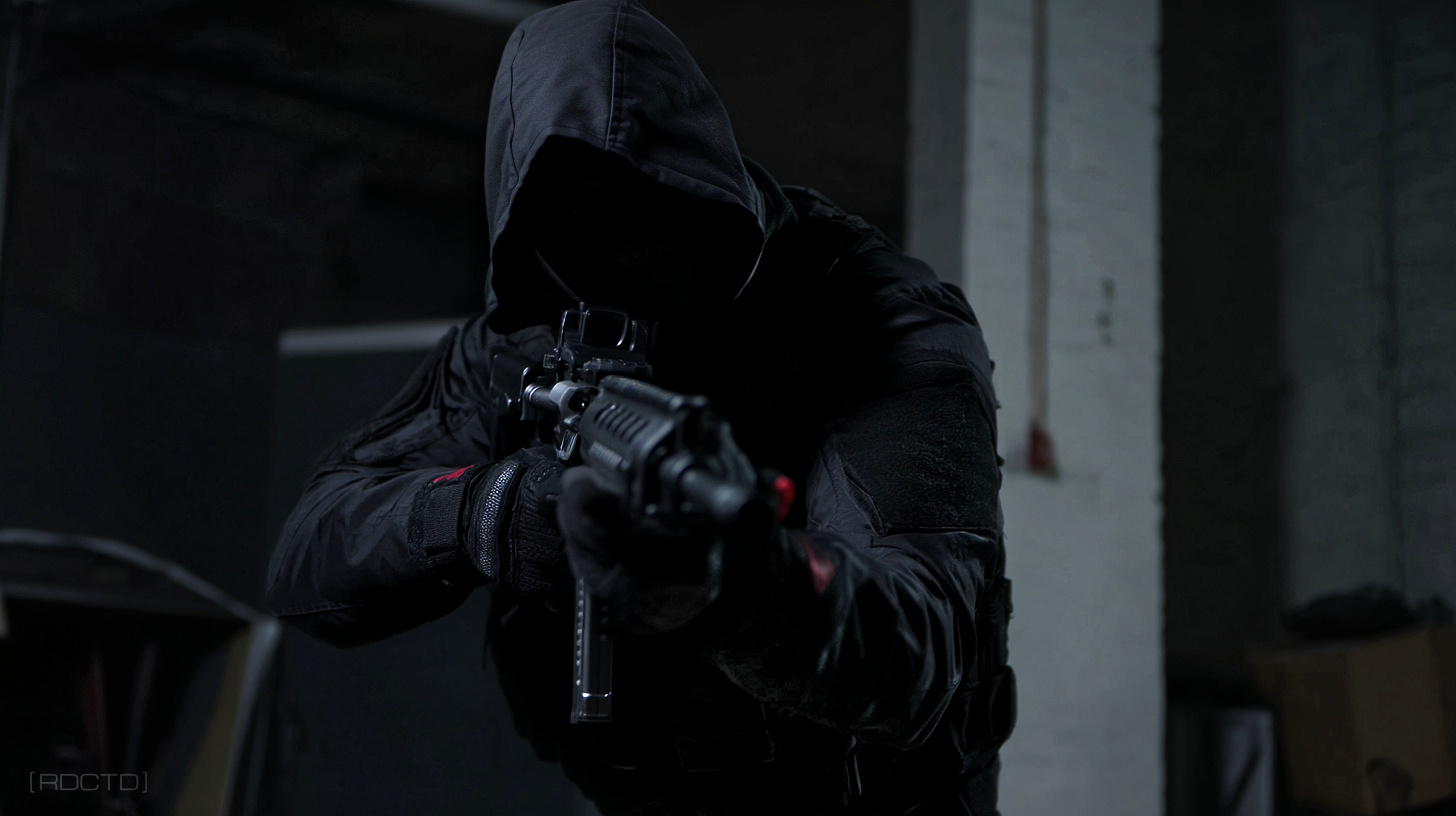 Being a hard target means you’re not someone who’s easy to attack, read, manipulate, or surprise. It’s part physical presence, mental conditioning, situational awareness, behavioral consistency, and aura.
Being a hard target means you’re not someone who’s easy to attack, read, manipulate, or surprise. It’s part physical presence, mental conditioning, situational awareness, behavioral consistency, and aura. You want to look like someone who doesn’t want to start trouble, but also someone who looks like they can end trouble.
This is a form of self-defense and personal security. It’s shaping how others perceive you before they ever decide to test you. It’s to project the kind of presence that makes people think twice before approaching with bad intentions. This goes beyond physical strength or combat skills; it’s about how you move, how you observe, and how you carry yourself in public and private.
In covert operations, becoming a hard target is part of survivability. Operatives can’t afford to look vulnerable (unless for strategy) – not to criminals, surveillance teams, or foreign intelligence. You strip away the obvious signs of weakness: distracted movement, nervousness, predictable habits.
Instead, you replace them with confident body language, alert eyes, and a calm demeanor that says, “I see you, and I’m ready.” Being a hard target means removing exploitable gaps in your behavior and replacing them with presence and intent. You don’t just look prepared, you are. And in the eyes of an attacker, that’s often enough to make you a problem they don’t want.
A hard target plans backwards from failure and then trains forward from survival.
Start with posture. Your body language is the first signal others read, and it tells people immediately if you’re predator or if you’re prey. Stand upright, shoulders relaxed but squared, with your head on a swivel – alert, not paranoid.
Move with purpose, not haste. Make casual eye contact without locking on or challenging everyone in the room; you’re not hunting, but you’re not unaware. Don’t fidget, don’t slouch, and don’t carry yourself like you’re unsure of your place in the environment. Walk like you belong, hesitation draws attention.
When you enter a space, take a moment (few seconds) to scan exits, corners, reflective surfaces, and anyone who looks at you longer than necessary. Do it smoothly, as if it’s second nature. You’re not sweeping the room like a drone, you’re building a mental snapshot so you can notice if something changes.
Dress for the environment you’re in, not for attention. Avoid anything that signals excessive wealth, status, or ego unless your cover demands it. Flash invites targeting. Blend into your surroundings, but look switched on. Your goal is to disappear into the noise while silently communicating: “I see you, and I’m ready.” That’s the baseline for becoming a hard target.
If you can’t control your emotions under pressure, someone else will use them to control you.
Situational awareness is the bedrock of being a hard target. It’s a skill to stay one step ahead by knowing what’s happening around you without broadcasting your attention. Operatives can spot a problem developing before anyone else realizes something’s off – by noticing small details.
A hard target picks up on patterns: a person following too closely for too long, a vehicle that mirrors multiple turns, an unusual sound that doesn’t match the environment, or someone loitering with no clear purpose. These are instincts with trained responses, sharpened through repetition and real-world exposure.
You don’t need to memorize every license plate or facial feature. What matters is knowing what normal looks like so you can spot what doesn’t belong. It’s like maintaining a rolling snapshot of your surroundings – exits, who’s come and gone, who’s watching, who’s not engaged. Update that mental picture every few minutes, and when you transition to other spaces.
Operatives learn to do this under pressure and fatigue, because it becomes second nature over time. If you’re in public, keep your phone down unless there’s a mission-critical reason to use it. You can’t assess your environment through a screen. Stay in the moment as most people aren’t.
People confuse confidence with comfort. Operatives train to be confident in discomfort, that’s the edge.
Next comes mindset and training, where being a hard target is truly forged. This isn’t just about learning how to fight or defend; it’s how you think under pressure, how you respond when things go sideways, and how well you control your emotions in moments when others lose their shit.
A hard target never panics. That kind of composure only comes from repeated exposure to extreme stress. First in controlled training environments, then in real-world situations where failure has real consequences. Stress inoculation is key. The more you’ve seen and operated under duress, the less likely you are to freeze or overreact when the pressure’s real.
You should absolutely be trained in close quarters combat, but just as important as throwing punches is knowing when not to. Violent confrontation is rarely your best option – hard targets understands that. Your skillset should include combatives as well as movement under pressure, controlled escape, verbal de-escalation, and tactical disengagement.
This makes you versatile and harder to predict. Don’t showboat, don’t bluff, and never escalate for ego. Project calm (sometimes cold), focused readiness – like someone who’s thought this through and is capable of decisive action. A hard target is quiet, deliberate, and almost impossible to provoke.
Most people give away their emotional state like an open book such as nervous energy, excessive talking, fidgeting, shifting eyes. These are tells professionals and skilled hostile actors pick up on instantly. Operatives are trained to suppress those signals. You want to be the kind of person whose expression doesn’t change when something unexpected happens.
Control your breathing, your voice, your pace, and calm your heart. Your mental edge is what keeps you two or three steps ahead of the threat, and that advantage is only earned through sustained, realistic training.
Predictability is a kindness you unwittingly offer to people who might want to harm you.
Consistency reinforces the profile. Threat actors don’t need you to be careless all the time; they just need you to let your guard down once. In covert operations, we don’t leave gaps in behavior because those gaps become vulnerabilities. The same rule applies to your daily “normal” life.
You need to make awareness and discipline part of your baseline – not something you turn on and off depending on mood or circumstance.
Keep a low, controlled digital footprint and avoid predictable routines. Patterns are comfortable, but they also make you easier to locate, track, anticipate, and therefore attack. Vary your routes, timing, and daily rhythms just enough to add friction for anyone trying to build a profile on you.
You don’t need to live in constant high-alert, just be deliberate. Know what you’re doing, and why. A hard target lives with intention, not convenience. Habits like parking your vehicle facing out, sitting with a clear view of entrances, and keeping sensitive conversations offline are scaled-down tradecraft techniques. Simple, effective, and invisible to most.
You should also limit what others can observe and predict about you. Keep your personal life private, control what you share online, and always assume someone might be watching or listening. The point is preparation.
You want anyone assessing you to walk away thinking: “This person is too disciplined, too aware, and not worth the effort.” That’s what consistency builds. Not a façade of toughness, but a durable and reliable deterrence.
A calm face, a silent posture, and a mind five steps ahead – that’s presence.
Lastly, there’s the intangible layer, presence. It’s the quiet, unmistakable aura you give off that tells others you’re not someone to fuck with – without saying a word. This isn’t something you can buy, borrow, or bluff.
It comes from time under tension; intense training, making mistakes, learning from them, and coming out the other side sharper. Presence is a byproduct of experience, composure, and repeated exposure to situations where staying calm meant staying alive. You develop it only by earning it by living it.
People pick up on presence without knowing why. It’s the way you move, the way you look around a room, how you speak – measured, not rushed. You don’t need to posture or dominate to have presence. In fact, the strongest presence usually comes from those who speak the least but see the most.
Operatives build it over years as it’s necessary in the field. You can’t fake it for long. The moment you’re tested, the mask cracks, and the truth comes out. That’s why real presence depends on experience and self-control.
Confidence is earned. Composure is trained. Together, they make you a problem no one wants to face.
Being a hard target is a strategy of discipline of the self. It’s what happens when awareness becomes instinct, when silence becomes strength, and when your presence in any space quietly alters the behavior of others. It’s not fear or intimidation but about responsibility for your own outcome, lived out in the smallest, most consistent decisions. You’re shaped by intent, not reaction.
![]()
// The first layer of passive defense is how the world sees you. Shape it to make it count.
[INFO : CIA ‘Killer’ Instincts]
[TAG : Hard Target Mindset]
![[RDCTD]](https://rdctd.pro/wp-content/uploads/RDCTD-Covert-Operative-Tradecraft-Guide-LOGO-tk.png)
![[RDCTD]](https://rdctd.pro/wp-content/uploads/RDCTD-Covert-Operative-Tradecraft-Guide-LOGO-mobile.png)
